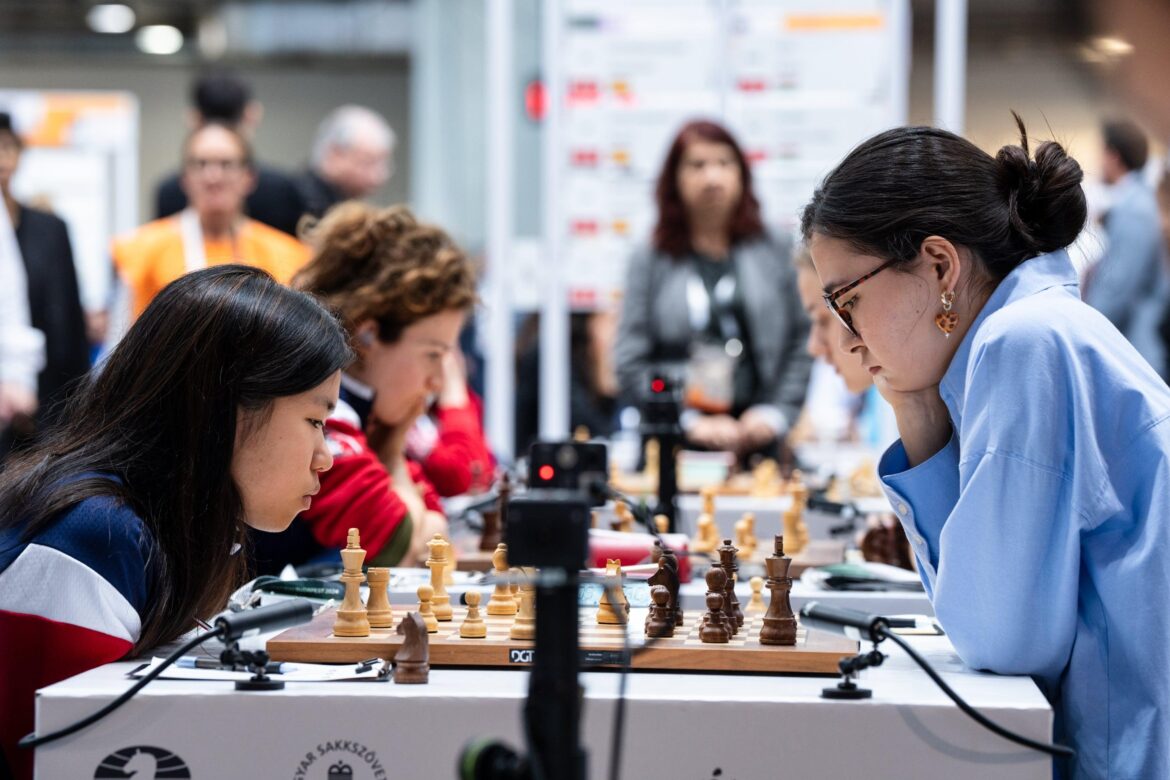Girls who start with the same age and rating as boys will continue to play chess at a similar rate and at a similar level as those boys, especially in areas where participation is more gender-balanced. A new study, published in Chance and co-funded by Chessable, reveals new insights into the much-researched topic of the gender gap in chess.
A new in-depth study, “Across the Board: Sex, Ratings, and Retention in Competitive Chess,” analyzes nearly three decades of US Chess data and uncovers a critical finding for the chess community: the long-observed rating gap between male and female players is largely determined by differences at the moment they enter competitive chess, not their ability to improve over time.
The paper, authored by Angela Li, Mark E. Glickman, and Christopher F. Chabris, suggests that focusing on creating more balanced starting conditions and environments could be the most effective way to achieve gender parity on the chessboard.
Comprehensive analysis
The comprehensive analysis, which covered over 680,000 US Chess members and spanned the years 1992 through 2019, first confirmed several long-standing trends, also signaled in Chabris and Glickman’s earlier work from 2006 about chess and gender.
1. Persistent rating gap
In every year examined, the distribution of ratings for active male players consistently lay above that of active female players across the entire rating spectrum and remained relatively stable over time. Median ratings for males continued to be higher than for females and a growing participation of females did not erase the gender gap.
2. Persistent participation gap
While the number of active players increased substantially between 1992 and 2019, male participation consistently outpaced female participation by a wide margin every year. Female participation was highest among the youngest age groups tracked (5-10 years and 11-15 years old), while the proportion of female players remained low and relatively flat in older age groups, especially beyond age 20.
3. Male advantage at entry
When tracking young players who started competing between the years 2000 and 2010 and were between 8 and 10 years old, boys already had a modest advantage in median rating from their very first year. This gap remained relatively stable over the next nine years as both groups’ ratings rose in parallel. This suggests that boys, on average, outperform girls over the early stages of their chess careers.
4. Faster female attrition
The data showed a steep decline in participation over time for both boys and girls. By year nine, less than 10 percent of the original cohort remained active. Importantly, girls dropped out of competitive chess at a faster rate than boys, suggesting that girls may lose their enthusiasm to compete more quickly.
Matched analysis: different results
To better isolate sex differences in rating progression and retention, the researchers conducted a specialized matched analysis, which provided important insights. They matched girls to boys of the same age (again between 8 and 10) who began competing in the same year and had a virtually identical initial rating, within a 50-point interval. This key step controlled for any initial skill difference, allowing them to track only the subsequent development.
The results of this matched analysis were striking. For starters, once boys and girls were matched at their starting age, cohort year, and rating, their subsequent rating trajectories were remarkably similar. The rating distributions for both groups remained closely aligned for the next nine years, suggesting that once players start on an equal footing, their growth in skill is nearly identical. Also, the higher dropout rate for girls seen in the general population all but disappeared in the matched sample. The retention curves for matched boys and girls tracked each other very closely over time.

If a girl and a boy start with the same rating and are the same age, their chess improvement and likelihood of sticking with the game are essentially the same. This strongly suggests that the overall gender gap isn’t caused by innate ability differences or a difference in how quickly boys and girls can improve, but rather by factors at the point of entry and the competitive environment itself.
The role of local context
The study further explored the idea that the local environment is a key factor. By analyzing starting ratings across different geographic areas (Core-Based Statistical Areas, or CBSAs), researchers found a modest but consistent negative relationship between the proportion of girls among new competitors and the initial rating gap.
In areas where more girls are playing from the start, the gap in starting ratings between boys and girls shrinks. Even in the most gender-balanced areas, where girls made up about 30 percent of new players, the starting rating difference between boys and girls noticeably diminished. This is a strong hint that when participation is more balanced, girls begin their competitive careers just as strongly as their male peers and local context plays a role in shaping early competitive experiences.
Part of that ‘local context’ might be the role that parents and trainers play in the early careers of boys and girls. A paper from October 2023 co-written by WGM Jennifer Shahade showed that parents and mentors often believe that girls have a lower potential in chess than boys, a bias that is more pronounced among those who think chess success requires brilliance.
Li, Glickman, and Chabris conclude that encouraging broader and more sustained participation among young girls may not only boost numbers but also help close performance gaps that have long been considered an unavoidable reality of competitive chess. For the chess community, this highlights a clear path forward: focus on leveling the playing field at the entry level and fostering supportive, gender-balanced environments.
